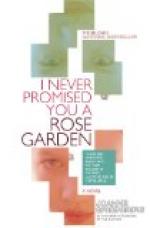In starting the hardy seed bed it is always safe to plant columbines, Canterbury bells, coreopsis, larkspur, pinks in variety, foxgloves, hollyhocks, gaillardia, the cheerful evergreen candy-tuft, bee balm and its cousin wild bergamot, forget-me-nots, evening primroses, and the day-flowering sundrops, Iceland and Oriental poppies, hybrid phlox, the primrose and cowslips of both English fields and gardens, that are quite hardy here (at least in the coastwise New England and Middle states), double feverfew, lupins, honesty, with its profusion of lilac and white bloom and seed vessels that glisten like mother-of-pearl, the tall snapdragons, decorative alike in garden or house, fraxinella or gas plant, with its spikes of odd white flowers, and pansies, always pansies, for the open in spring and autumn, in rich, shady nooks all summer, and even at midwinter a few tufts left in a sunny spot, at the bottom of a wall by the snowdrops, will surprise you with round, cheerful faces with the snow coverlet tucked quite under their chins.
[Illustration: FRAXINELLA,—GERMAN IRIS AND CANDY-TUFT.]
It is well to keep a tabulated list of these old-time perennials in the Garden Boke, so that in the feverish haste and excitement of the planting season a mere glance will be a reminder of height, colour, and time of bloom. I lend you mine, not as containing anything new or original, but simply as a suggestion, a hint of what one garden has found good and writ on its honour list. Newer things and hybrids are now endless, and may be tested and added, one by one, but it takes at least three seasons of this adorably unmonotonous climate of alternate drought, damp, open or cold winter, to prove a plant hardy and worthy a place on the honour roll. (See p. 376.)
Before you plant, sit down by yourself with the packages spread before you and examine the seeds at your leisure. This is the first uplifting of the veil that you may see into the real life of a garden, a personal knowledge of the seed that mothers the perfect plant.
It may seem a trivial matter, but it is not so; each seed, be it seemingly but a dust grain, bears its own type and identity. Also, from its shape, size, and the hardness or thinness of its covering, you may learn the necessities of its planting and development, for nowhere more than in the seed is shown the miraculous in nature and the forethought and economy of it all.
The smaller the seed, the greater the yield to a flower, as if to guard against chances of loss. The stately foxglove springs from a dust grain, and fading holds aloft a seed spike of prolific invention; the lupin has stout, podded, countable seeds that must of necessity fall to the ground by force of weight. Also in fingering the seeds, you will know why some are slow in germinating: these are either hard and gritty, sandlike, like those of the English primrose, smooth as if coated with varnish, like the pansy, violet, columbine, and many others, or enclosed in a rigid shell like the iris-hued Japanese morning-glories and other ipomeas. Heart of Nature is never in a hurry, for him time is not. What matters it if a seed lies one or two years in the ground?




